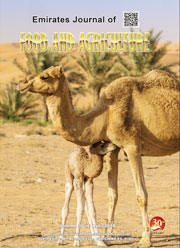INVESTIGATING THE ANTIOXIDANT AND ANTICYTOTOXIC ACTIVITIES OF PROPOLIS COLLECTED FROM FIVE REGIONS OF INDONESIA AND THEIR ABILITIES TO INDUCE APOPTOSIS
DOI:
https://doi.org/10.9755/ejfa.v26i5.16549Keywords:
Propolis, Trigona sp, flavonoids, anticancer, MCF-7, MTT-assayAbstract
Propolis is a resinous substance collected by stingless bee or honey bee from various plant sources. The substance is known to contain beneficial properties for human. The geographical origin of propolis determines its biological properties. In this study, propolis were collected from five regions of Indonesia with the objective of determining the yield, their total flavonoid content, their capacity to induce apoptosis, and their toxicity to the Michigan Cancer Foundation-7 (MCF-7) cell line. The inhibition of antioxidant 1,1-diphenyl-2-picrylhydrazyl (DPPH), the induction of apoptosis to Saccharomyces cerevisiae and the anticytotoxic ability were determined. Propolis from Pekanbaru region had higher yield than other regions with value of 19.97%; propolis from Kendal had higher quantity with value of 46.60%, total flavonoid content; propolis from Pandeglang was higher in DPPH oxidation capacity with value of 68.94 ?g.ml-1; propolis from Kendal, expressed petite cell induction in S. cerevisiae cells with value of 81.44%, and the anticytotoxic to MCF-7 breast cancer cell line were best observed in propolis from Makassar region with a value of 47.71% life cells. All of the propolis extracted from the stingless bee hive Trigona spp from five regions in Indonesia contained flavonoids.










 .
. 